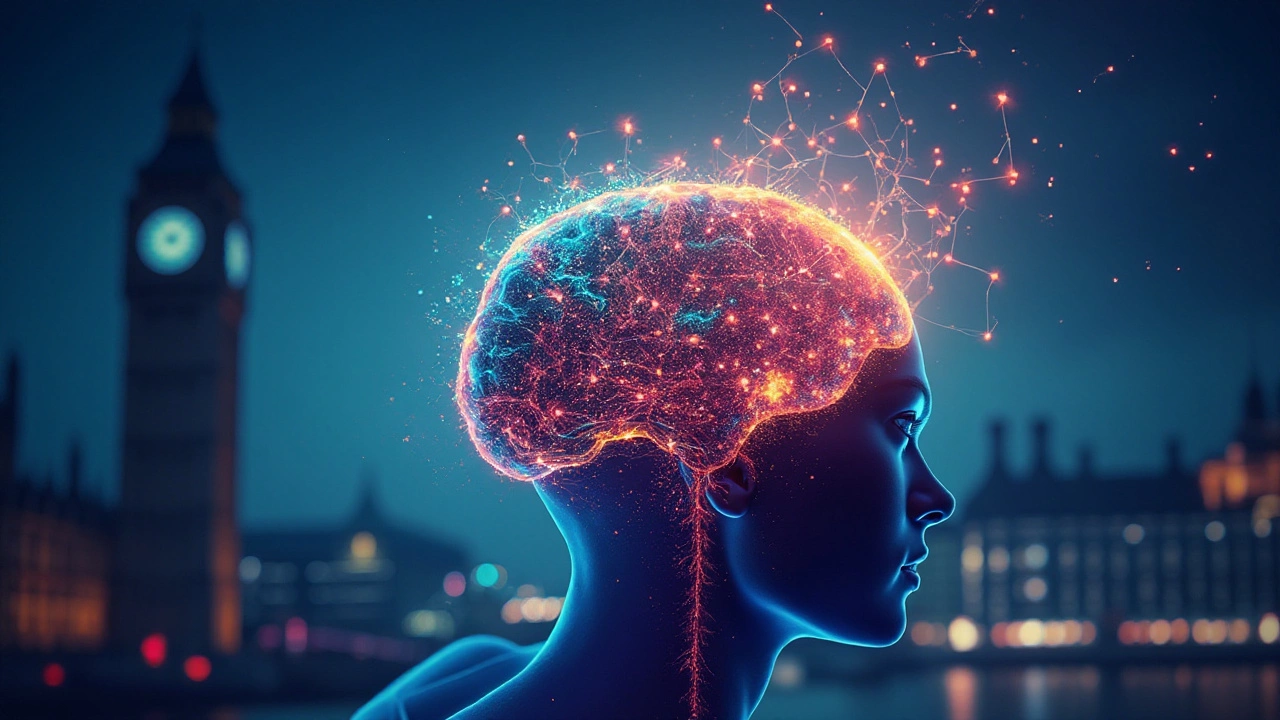-
25
- 0

Understanding the 7 Types of Learning Disabilities and How to Support Them
Learning disabilities are often misunderstood, subject to myths and misconceptions. They are, at their core, neurological differences that affect how individuals perceive and process information. These differences can impact reading, writing, math, reasoning, and even social skills. Understanding these disabilities is crucial in supporting those who have them.
Far from being a measure of intelligence, learning disabilities are simply a manifestation of the brain's unique wiring. While they present challenges, they also call for innovative teaching strategies tailored to each student's needs. In this article, we'll explore the seven specific learning disabilities recognized by experts and offer practical advice for supporting learners on their educational journey.
- What Are Learning Disabilities?
- The Seven Specific Learning Disabilities
- Effective Strategies for Support
- Resources for Parents and Educators
What Are Learning Disabilities?
Learning disabilities, often abbreviated as LDs, are neurologically-based processing problems. These conditions interfere with learning foundational skills such as reading, writing, and math. They can also hinder higher-level skills like organization, time planning, abstract reasoning, long or short-term memory, and attention. Yet, what defines these disabilities is not what they impede, but how they manifest through cognitive functions.
There's a common myth that learning disabilities equate to lower intelligence. On the contrary, individuals with learning disabilities often possess average or above-average intelligence. The discrepancy lies in how their brains are wired to process the world around them. This distinct neurological circuitry can make traditional learning environments difficult, as regular instructional methods don't always cater to their specific needs. To better aid individuals with LDs, recognizing and understanding their unique learning processes is crucial.
According to the National Center for Learning Disabilities, approximately one in five children has learning and attention issues. Among them, a significant portion has formal learning disabilities. The causes span from genetic factors to differences in the brain's structure and function, emphasizing that no single decoding or problem-solving method works universally. As such, tailored teaching strategies and accommodations are pivotal to these individuals' success.
Understanding learning disabilities begins by identifying the specific challenges each type presents. Dyslexia, for instance, often impacts reading and language, making it challenging for affected students to decode words or recognize their meaning. On the other hand, dyscalculia affects one's ability to understand numbers, complicating math-related tasks. Recognizing these nuances is key to providing the right support strategies, ensuring students aren't left behind simply due to a standardized approach to education.
"One's ability to learn might be different, but the capacity to achieve should never be underestimated." - A statement that reflects the potential of individuals with learning disabilities when afforded proper understanding and support.
It's vital to frame learning disabilities not as limitations but as differences. By doing so, educational approaches can pivot towards methods that align with the ways these students process information. Early intervention and ongoing support can drastically improve outcomes, enhancing both academic success and personal confidence. As parents, educators, and allies, recognizing these disabilities is our gateway to nurturing a diverse and inclusive learning environment.

The Seven Specific Learning Disabilities
Understanding the spectrum of learning disabilities is crucial for tailoring educational strategies that can help each child thrive. These disabilities reflect unique ways in which individuals process information. Importantly, they do not reflect a child's intelligence or their ability to succeed. Instead, the emphasis is on understanding and adaptation. Let's dive into what makes each of these seven learning disabilities unique and the challenges they present.
1. Dyslexia
Dyslexia is perhaps the most well-known learning disability, primarily affecting reading skills. Individuals with dyslexia struggle with word recognition, decoding, and spelling. It is estimated that up to 15% of the population exhibits symptoms of dyslexia, affecting reading comprehension and fluency. This does not mean they lack intelligence or creativity—a common misconception—despite the struggles with language-based tasks.
Support strategies for dyslexia include the utilization of phonics-based programs, which emphasize the relationship between sounds and their spelling. Visual aids and audiobooks are often helpful, offering alternative methods to process written material. Albert Einstein, known for his vast contributions to science, is often cited as an individual who may have had dyslexia, showing that challenges in reading can certainly coincide with brilliance in other domains.
2. Dyscalculia
Dyscalculia affects the ability to understand numbers and learn math facts. It manifests in difficulties with number sense, memorizing arithmetic facts, and understanding concepts of time. Struggling with basic math can be particularly challenging in a society that emphasizes STEM education. However, individuals with dyscalculia often exhibit strengths in reasoning and innovative thinking, proving that their abilities can shine in non-linear ways.
"The essence of mathematics is not to make simple things complicated, but to make complicated things simple," said Stan Gudder, an American mathematician. For those with dyscalculia, this simplification is a daily pursuit.
Drawing connections between math and real-world applications can aid in understanding. Visual learning strategies, such as using blocks or illustrations, can provide alternate pathways to grasp numerical concepts. Patience and encouragement remain key, helping to build confidence in children facing challenges with numbers.
3. Dysgraphia
Dysgraphia primarily affects writing, including clear handwriting and coherence in written expression. It causes trouble with spelling, organizing thoughts on paper, and fine motor skills related to writing tasks. It can be frustrating for children who understand ideas verbally but are unable to translate them onto paper seamlessly.
Supportive strategies include the use of technology like speech-to-text tools, allowing students to express themselves without the hindrance of writing. Encouraging exercises that focus on hand muscle development can also be beneficial. The role of educators is vital in recognizing these symptoms early and providing an academic environment sensitive to their needs.
4. ADHD (Attention-Deficit/Hyperactivity Disorder)
While technically not classified only as a learning disability, ADHD can significantly impact academic performance. Characterized by inattention, hyperactivity, and impulsiveness, ADHD affects a child's ability to concentrate, affecting all areas of learning. This condition requires tailored interventions both in and out of the classroom.
The educational environment can be adjusted to minimize distractions and maximize focus. Using tools such as fidget spinners or adjustable seating can help students channel their energy constructively. Teachers who incorporate short, engaging activities can capture attention more effectively. A crucial element is recognizing the strength children with ADHD can exhibit, such as creativity, enthusiasm, and unique problem-solving abilities.
5. Auditory Processing Disorder
This disorder limits the ability to process information that's heard, affecting the discernment of different sounds, understanding spoken language, and following verbal instructions. In an educational setup where verbal instruction is significant, this can pose a substantial challenge. Audiobooks, recordings, and visual aids can provide alternative ways of absorbing information.
| Symptom | Examples |
|---|---|
| Sound Discrimination | Difficulty distinguishing between similar sounds |
| Comprehension | Challenges in understanding spoken instructions |
The importance of clear communication and patience is paramount. Strengths in problem-solving and determination shine through when the neurodivergent talents in those with auditory processing disorder are recognized and nurtured.
6. Visual Processing Disorder
Different from poor eyesight, this disorder affects how the brain processes visual input. It can manifest in misalignment of written text, difficulty in copying from the board, or trouble with spacing and positioning. By providing special enlarging tools, software that reads aloud text, and teaching how to organize visual space on paper, students can better navigate these challenges.
Recognizing the creative and often lateral thinking of those with visual processing disorder is crucial. Creativity can often shine through in their work, which is characteristic of their unique way of viewing the world.
7. Language Processing Disorder
This specific disorder affects written and spoken language, interferring with both comprehension and expression. It is differentiated from other language-based disabilities by the specific challenge in understanding and processing language.
Opportunities for reading aloud, using visuals, and engaging interactively with language can help build essential skills. These methods offer different angles to approach language, reducing stress on those traditional methods can impose. Encouragement in a supportive setting provides the groundwork for these learners to thrive.

Effective Strategies for Support
Supporting individuals with learning disabilities starts with understanding that each person has distinct needs and strengths. It involves creating environments where learners feel safe, understood, and supported, both academically and emotionally. One crucial strategy is early identification and intervention, which helps in devising tailor-made educational plans. Early assessments can pinpoint specific areas where a child struggles, allowing educators and parents to implement targeted approaches. Additionally, establishing a strong support system, including a collaborative team of teachers, specialists, and parents, forms the backbone of effective assistance. This collective effort ensures that interventions are consistent across different contexts—be it at school or home.
Incorporating multi-sensory instruction is another time-tested method. Teaching through multiple senses, such as visual, auditory, and kinesthetic channels, provides numerous pathways for students to absorb and retain information. For instance, tools like textured letters for dyslexia or hands-on math manipulatives can significantly enhance understanding and engagement. Integrated technology, such as text-to-speech software and audiobooks, also play a vital role, granting students access to a range of learning materials. Furthermore, flexible teaching methods that accommodate different learning speeds and styles ensure that each student can progress at their own pace, reducing frustration and anxiety.
Emphasizing self-advocacy and resilience is another cornerstone of long-term success. Educators and parents can foster these traits by encouraging children to understand their unique learning profiles and communicate their needs effectively. Providing opportunities for choice and decision-making in learning activities cultivates a sense of autonomy and confidence. As Kathy Rollo, an expert in special education, once noted,
"Empowering students to speak up about their needs isn't just about improving their academic lives; it's about preparing them for a future where they can navigate a world that's not always designed for them."
Building a supportive classroom environment that celebrates diversity and inclusion is paramount. Teachers should focus on establishing clear, consistent routines and expectations that help students feel secure and know what to expect. Classrooms that promote positive social interactions and collaborative activities encourage peer support and understanding. Implementing these strategies helps de-stigmatize learning disabilities and shifts the focus from challenges to capabilities. Such environments empower students to take risks and make mistakes, fostering a growth mindset that can transform struggles into learning opportunities.
It is essential to provide continuous professional development for educators, ensuring they remain equipped with the latest research, tools, and techniques to assist students effectively. Workshops and seminars can offer valuable insights into cutting-edge educational practices and innovative technological aids. Educators trained in adaptive learning strategies can successfully create instructional materials that align with individual needs, offering a range of benefits particularly to students with ADHD or dyslexia, thereby maximizing their educational outcomes.

Resources for Parents and Educators
In the arena of special needs education, having access to the right resources can dramatically change the learning landscape for both parents and educators. While learning disabilities may present obstacles, they also inspire innovative methods that can illuminate pathways to success. For parents, navigating this world begins with understanding their child's unique challenges and potential. It’s crucial to foster a supportive home environment that is rich with patience and encouragement. This can mean engaging with educational therapists who offer personalized strategies or joining support groups where experiences and insights are shared. Being part of a community can reduce the isolation that many parents feel, providing camaraderie and collective wisdom that is invaluable.
Educators, too, have a critical role in the lives of students with learning disabilities. Schools and teachers are often on the frontline, implementing strategies that facilitate successful learning. Creating lesson plans that integrate visual aids, interactive activities, and assistive technology can transform the classroom experience for students with learning disabilities. Understanding the importance of differentiation in instruction is key, as is maintaining an ongoing dialogue with parents to ensure that the support continues beyond the classroom.
When it comes to practical tools, one of the most effective resources is assistive technology, which has become increasingly sophisticated in recent years. Devices and software designed to aid reading, writing, and organization can provide students with greater independence and confidence. There is a vast array of tools available – from speech recognition software that assists students with dyslexia to apps that help those with ADHD stay organized and focused. The choice of tools should be tailored to the specific needs of the student, creating a customized approach that can aid substantial progress.
"When we understand that failure is a function not of being stupid but of being 'misunderstood,' then optimism replaces pessimism, and success can replace failure" — LouAnne Johnson, educator and author.
The digital world offers an abundance of online platforms and e-learning courses that cater specifically to students with learning disabilities. Websites run by national organizations provide expert advice, free resources, and forums where dialogues on best practices take place. For instance, the Learning Disabilities Association of America offers insights into individualized education programs (IEPs) and the support services laws that create equitable learning opportunities. Both parents and educators can benefit from webinars, which allow them to deepen their understanding and stay informed about new educational advancements.
Learning should not be confined within the walls of a classroom or home. The community serves as an excellent resource with local centers often providing programs and workshops geared towards skill development in a more relaxed setting. Summer camps and extracurricular activities can also be pivotal, offering social experiences that foster confidence and personal growth. Importantly, ensuring that children have opportunities to shine in areas beyond academics can reveal hidden talents and passions, bolstering their self-esteem and resilience.
Write a comment
Tags Weight
- education
- exam preparation
- study tips
- adult education
- online courses
- adult learning
- lifelong learning
- distance learning
- GCSE revision
- online education
- private tutoring
- special needs education
- scholarships
- remote learning
- scholarship tips
- financial aid
- international students
- effective learning
- e-learning
- education funding

Written by Elara Winslow
View all posts by: Elara Winslow